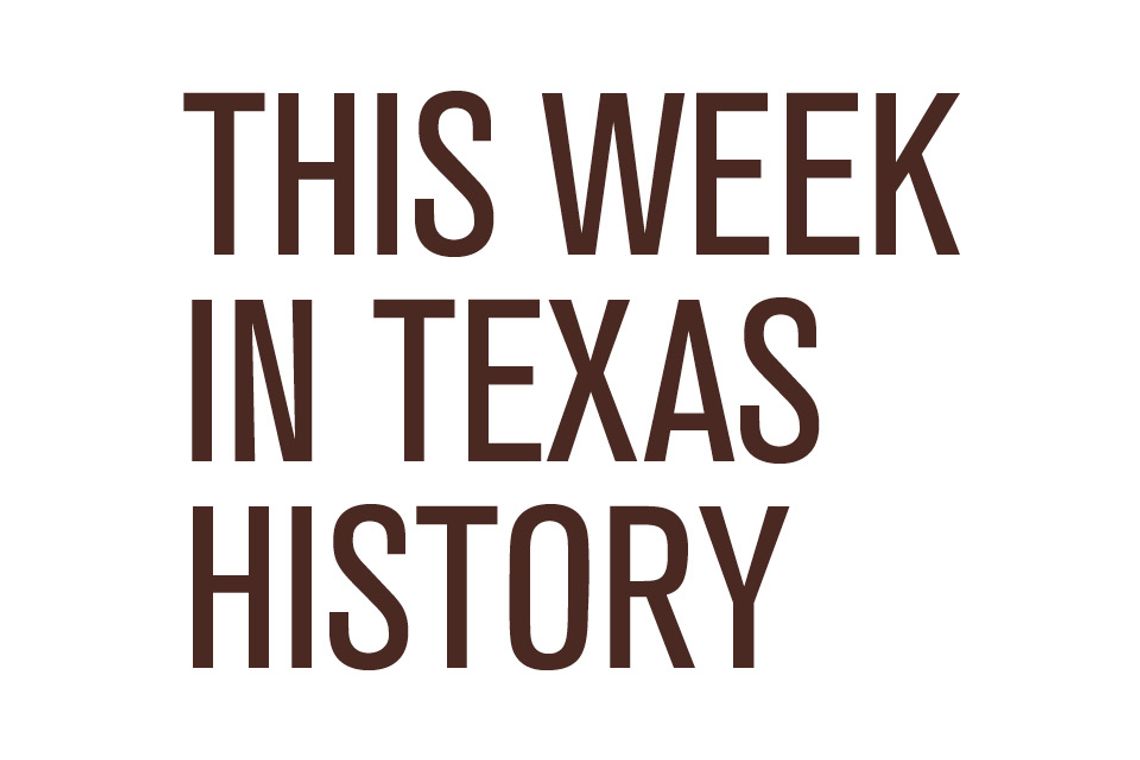By Bartee Haile
Freddie Wolcott burned up the track in the qualifying heats of the NCAA championships on Jun. 17, 1938. The sophomore sensation from Rice Institute flew over the hurdles adding two more victories to his perfect record.
The Snyder native had never seen much less taken part in a track meet before his senior year of high school. The short-handed cinder coach entered the football and baseball player in three events, and the fleet-footed youth responded with first-place finishes in the 100 and 220-yard dashes and the 220 low hurdles.
Following a freshman detour to Tarleton Junior College, Wolcott transferred to Rice where Emmett Brunson schooled the gifted beginner on the finer points of hurdling. The quick learner beat all comers in his specialties -- the 120 high hurdles and 220 lows -- and led the Owls to the 1938 title in the Southwest Conference.
In the preliminary round of the 17th annual college climax in Minneapolis, Wolcott was timed in 14 seconds flat over the highs -- one tick of the stop watch slower than his 13.9 at the Texas Relays but a tenth of a second better than the meet mark. He also was the fastest qualifier in the longer and lower obstacle course.
Experts expected Southern California’s Earl Vickery to give Wolcott a run for his money in the high-hurdle finals, but “The Blond Burr” hit the tape three feet ahead of the defending champion. The West Texan was even more impressive in the lows shaving a half second off the 12 year old American record on his way to the only “double” of the day. He became the first Rice representative to take home a pair of NCAA trophies since Claude Bracey won the dashes in 1928.
The USC Trojans claimed their fourth consecutive team title with nearly twice the total of runner-up Stanford. Wolcott and four teammates collectively accumulated enough points to tie mighty Notre Dame for fifth, while the Texas Longhorns, the only other contestant from the SWC, lagged far behind in 18th place.
“Flying Freddie,” a colorful nickname coined by his fans, proved immune to the “junior jinx” which so often follows sophomore success in sports. Nineteen thirty-nine was a year of repeats as the premier performer dominated his demanding events and earned the lion’s share of the credit for the Owls’ second conference title.
The largest crowd in the seven years since the 1932 Olympics turned out at the Los Angeles Coliseum for the NCAA finale. Many of the same spectators who applauded the exploits of Mildred “Babe” Didrikson in 1932 showed up to cheer another Texas athlete.
Wolcott did not disappoint, while as usual he broke his opponents’ hearts. He won the highs by a country mile after his closest competitor collided with the next to last barrier and foiled an attempt by former low-hurdle champ Vickery to regain his lost laurels. The 20 points awarded to the lone Owl for the duplicate “double” sewed up sixth place for his alma mater in the team standings.
The sky seemed to be the limit for Wolcott, who just got better and better. During his swan-song season, he set world records in the highs and lows with the latter staying on the books until 1952. As the best hurdler on the planet, a matched set of gold medals appeared to be in the bag until the armed conflict in Europe forced the cancellation of the 1940 Olympics.
In the absence of the international quadrennial, the NCAA meet took on extra added importance. For Boyce Gatewood, the hard-luck hurdler from the University of Texas, it was the last chance to beat his nemesis from Rice.
The preliminaries provided a much needed pick-me-up for the Longhorn’s morale, which was lower than a snake’s belly after losing every previous race to Wolcott. Running in separate heats, he finished a fraction of a second ahead of the world record holder in both hurdles.
The finals, however, stuck to the same frustratingly familiar script for Gatewood. “Flying Freddie” pulled away from the pack in the 120’s en route to a third consecutive championship, while he came in a disappointing third. Gatewood fared no better in the 220’s winding up in the same predicament, but an unsung challenger from New England spoiled Wolcott’s bid for three “doubles” in a row.
The ex-Owl bounced back the next year to win the 110 highs in 13.7 seconds at the national Amateur Athletic Union (AAU) tournament. This world record also stood the test of time lasting until 1950.
Wolcott competed occasionally in 1942, when his naval duties permitted, and showed he still had the stuff by whipping the field in the AAU 60-yard highs. After that, he hung up the spikes that had carried him to five NCAA and seven AAU championships.
World War II robbed Freddie Wolcott of his golden opportunity. When the Olympics resumed in 1948, he was 32 years old and well past his prime. A consolation prize of sorts was his 1958 induction -- a first for track and field -- into the Texas Sports Hall of Fame
“Murder Most Texan” is a must read for fans of true crime and Texas history. Order your copy for $24.00 by mailing a check to Bartee Haile, P.O. Box 130011, Spring, TX 77393.











